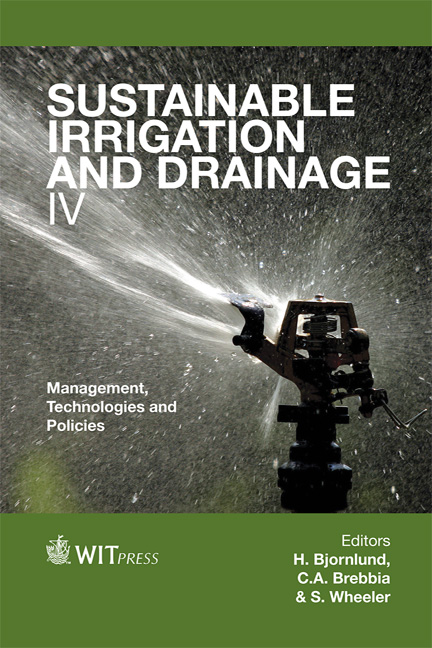Greenhouse Gas Emission From Wastewater Irrigated Soils
Price
Free (open access)
Transaction
Volume
168
Pages
12
Page Range
225 - 236
Published
2012
Size
404 kb
Paper DOI
10.2495/SI120191
Copyright
WIT Press
Author(s)
R. Thangarajan, A. Kunhikrishnan, B. Seshadri, N. S. Bolan, & R. Naidu
Abstract
With increasing demand for world water supply, wastewater reuse is a great opportunity to meet the water need, especially for agricultural and industrial development. Wastewater originates from many sources and hence its composition differs from origin and treatment processes. Wastewater rich in organic matter acts as a soil conditioner, thereby enhancing soil health. Wastewater also acts as a source of nutrient input in agriculture which in turn can reduce, or even eliminate the need for commercial fertilisers. However, wastewater usage in agriculture poses several threats like eutrophication, salinity, toxic chemicals (heavy metal(loids), pesticides), pathogen contamination, and most notably, nutrient leaching, and greenhouse gas (GHG) emission. These threats affect public health, soil and ground water resources, environment, crop quality, ecological, and property values. Biological degradation of the organic matter present in wastewater is considered one of the anthropogenic sources of major GHGs (carbon dioxide (CO2), nitrous oxide (N2O), and methane (CH4). In this paper, an overview of various sources of wastewater, effects of wastewater application on GHG emission from soil, and the strategies to mitigate wastewater-induced GHG emission from soils is presented. Keywords: agriculture, greenhouse gas, irrigation, mitigation, wastewater.
Keywords
agriculture, greenhouse gas, irrigation, mitigation, wastewater.





